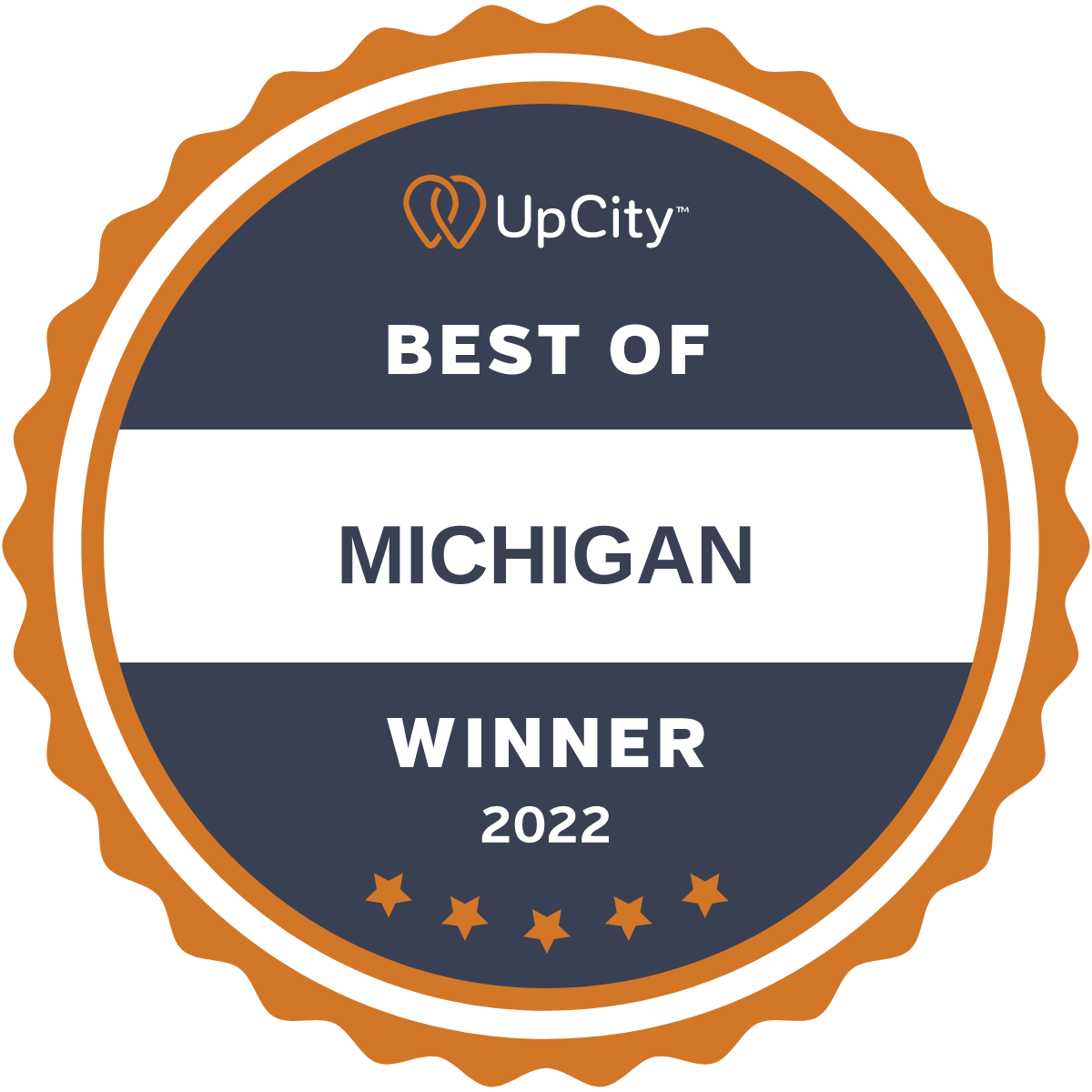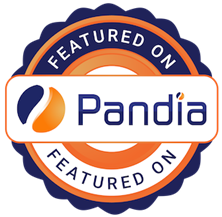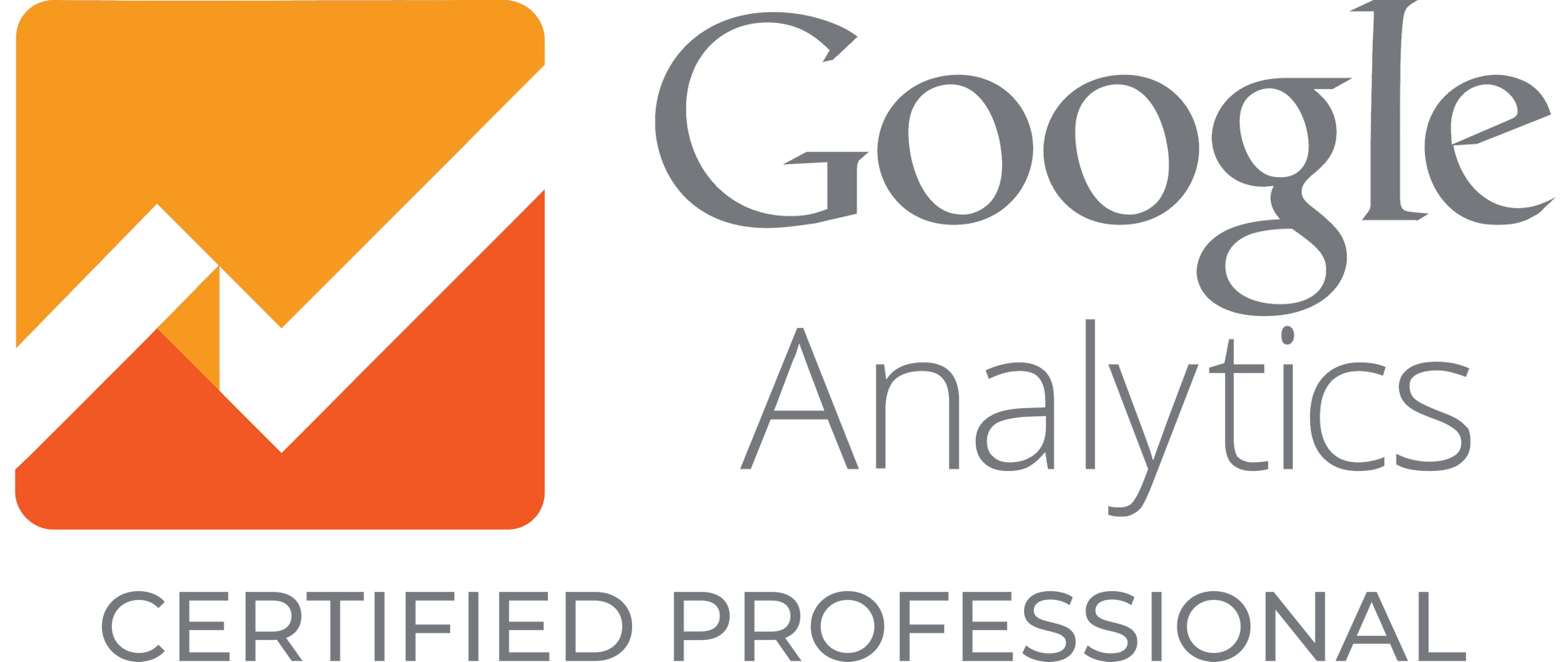How to Make On-Page Optimizations for SMB Websites?
On-page optimization helps SMBs improve their overall online presence while driving organic traffic. With better online visibility also comes better chances of attracting and retaining new customers.
Effective on-page optimizations help to increase visibility within local and relevant search results, especially since small businesses often compete within specific geographical or niche markets.
The key elements of on-page optimization for SMBs include meta titles and descriptions, header tags, image and video optimization, URL structure, and internal linking. An SEO company in Hastings, MI can help drive more traffic and revenue to make your website more competitive this year.
📲 Do you need help with your website’s on-page optimization? Schedule a Call with Speck Designs. 📞
Meta Titles and Descriptions
Meta titles and descriptions are critical for search engine optimization because they influence both search engine rankings and click-through rates (CTR). These are the first pieces of content potential customers see in search engine results, so optimizing them to attract clicks is crucial. One of the first things that a digital marketing company in Michigan would do is study the metadata of your website and make recommendations for improvement.
- Meta Titles
The meta title is the page’s main heading displayed in search results, serving as a summary of the page content. For SMBs, the meta title should clearly describe the page’s topic and include relevant keywords. Each page’s title should be unique and targeted to its specific content. A compelling meta title includes the primary keyword, the business’s unique value, and if applicable, a location keyword (e.g., “Affordable Plumber Services in Hastings, MI-XYZ Plumbing”). - Meta Descriptions
Meta descriptions provide a short summary (up to 160 characters) of what users can expect on the page. While meta descriptions don’t directly impact rankings, they do influence CTR, which can indirectly affect SEO.
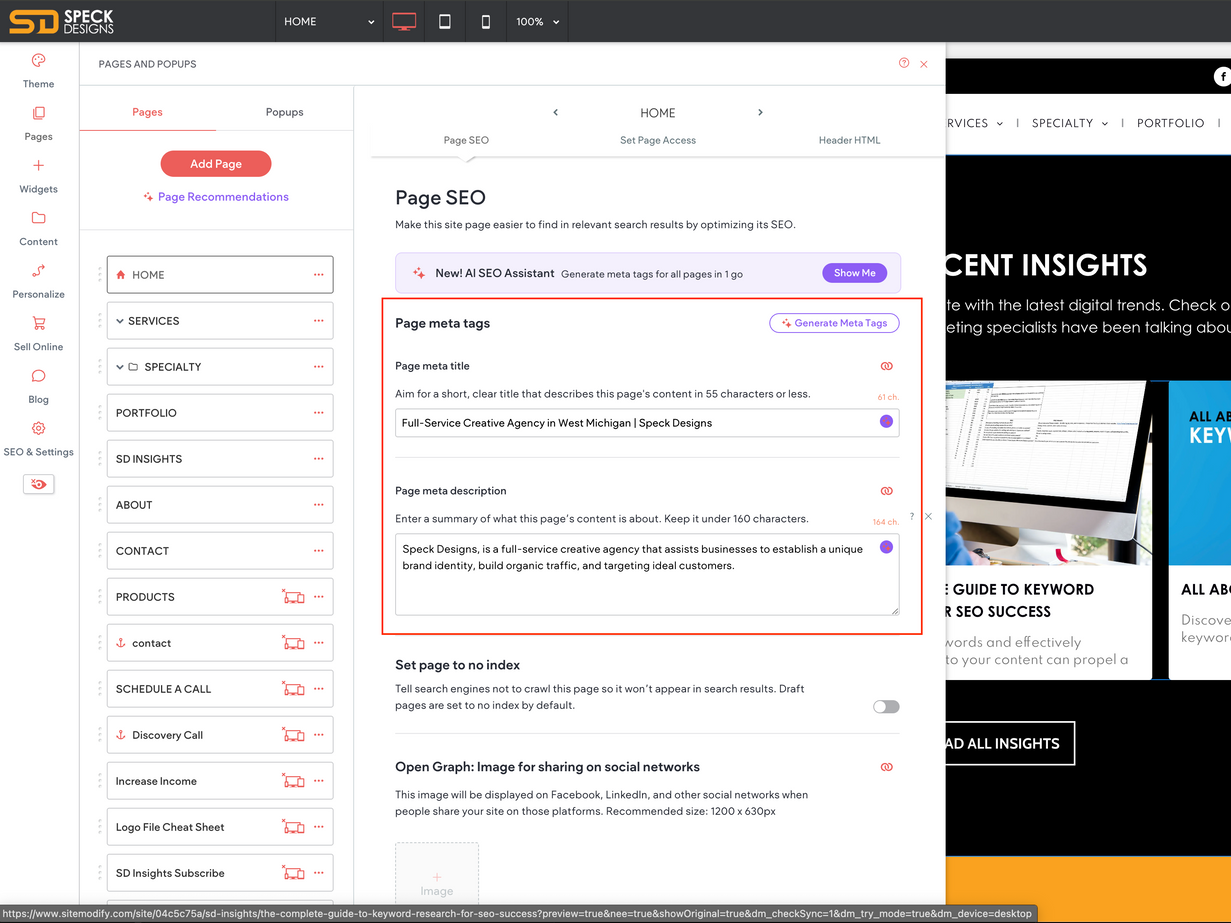
Header Tags (H1, H2, etc.)
Headers, or heading tags, organize content on your website, making it easier for both users and search engines to understand its structure. They are typically arranged hierarchically (H1 for the main heading, H2 for subheadings, and so on) and are essential for conveying the importance of content sections.
- H1 Tag
The H1 tag should be used only once per page and represent the main topic of the page. Think of it as the title of the page, which should contain the primary keyword and reflect the page’s content. For instance, on a “About Us” page, an effective H1 might be “About Our Team at [Your Business Name]” to establish relevance and clarity. - H2 and H3 Tags
Subheadings, such as H2 and H3 tags, are used to divide the page into sections and subsections. They make the content more readable and allow you to incorporate additional keywords naturally. For example, on a service page, you could use H2 tags for each main service offering and H3 tags for specific details or benefits of each service.
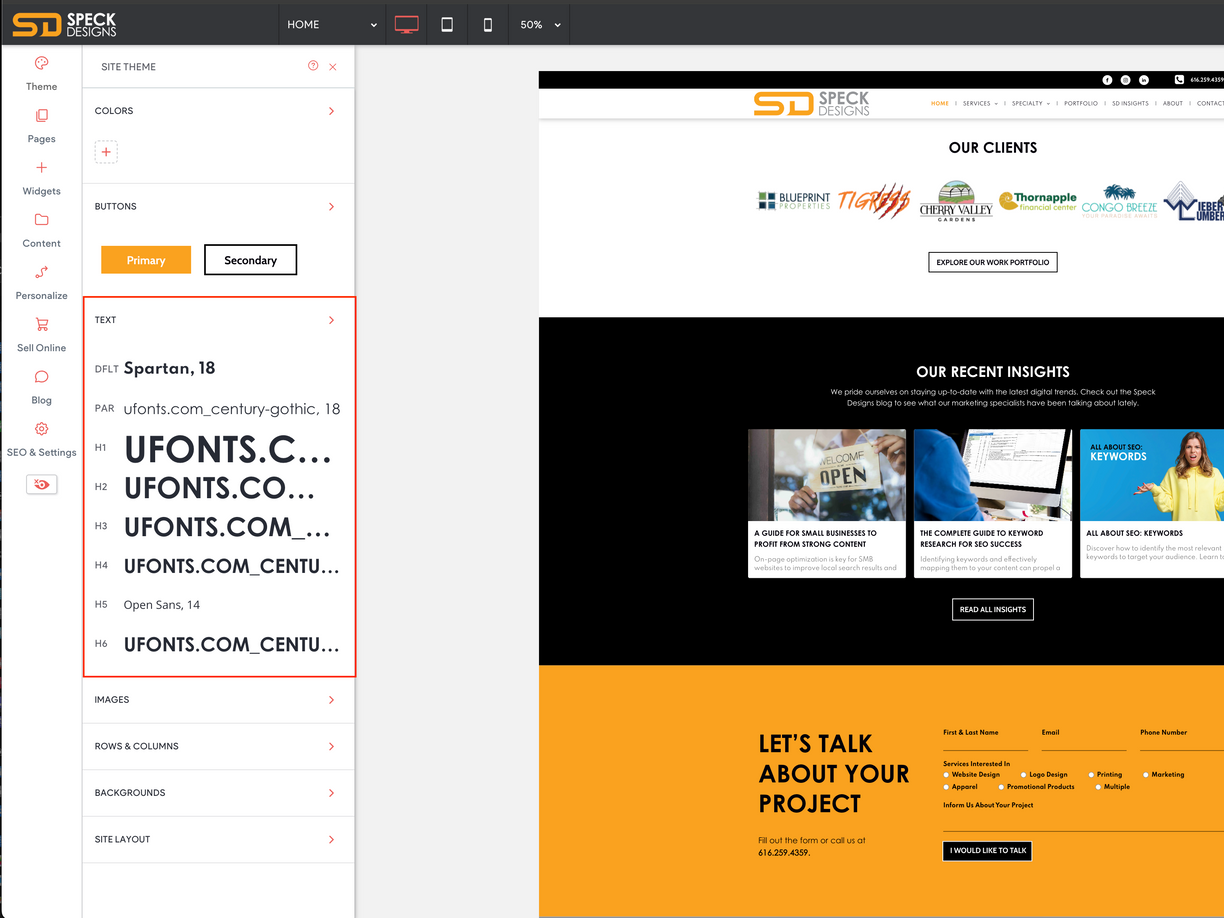
Optimizing Images and Video (Alt Text, File Size)
Optimizing images and videos is crucial for SMBs since these visual elements often enhance user engagement and can contribute to local SEO efforts. Optimized images load faster and include relevant keywords, which can improve your website’s performance in search results.
- Alt Text for Images
Alt text describes the content of an image for search engines and visually impaired users. By adding relevant, descriptive alt text, SMBs can make images easier for search engines to understand and index. For instance, if you run a bakery, an alt text for an image of a cake might read, “chocolate birthday cake with strawberries by XYZ Bakery in New York.” - Reducing File Size
Large file sizes slow down page loading times, which can negatively affect user experience and SEO rankings. Compressing images without compromising quality is essential. Tools like TinyPNG or Squoosh can help reduce file sizes while maintaining visual appeal. - Video Optimization
Videos also benefit from optimization techniques, such as using keywords in the video title, description, and tags. If the video is hosted on your website, consider using a player that supports fast loading, like YouTube or Vimeo, to avoid slowing down your site.
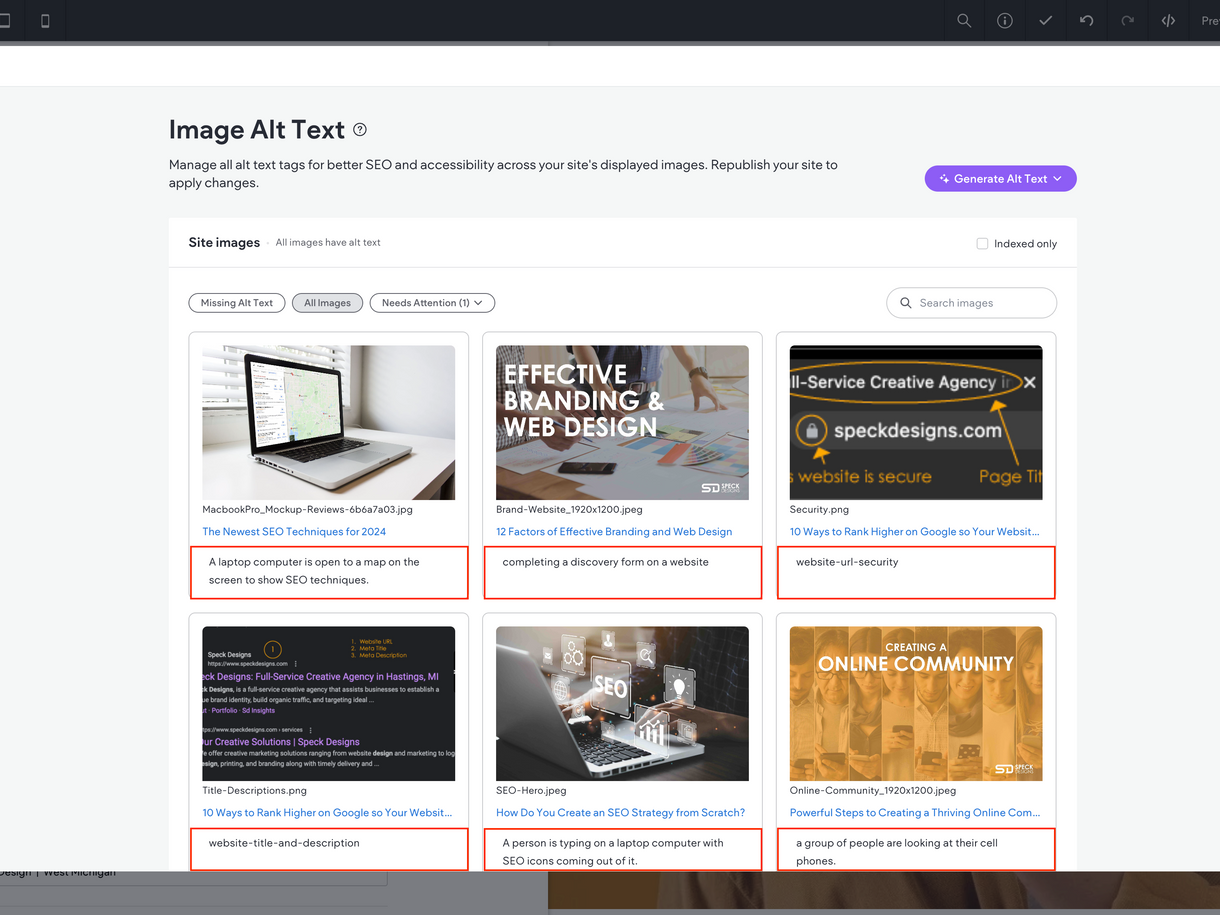
URL Structure
A clear, readable URL structure helps search engines understand the page content and makes URLs more user-friendly, enhancing your site’s credibility and professionalism. For SMBs, it’s also a chance to include keywords and improve local SEO efforts.
Best Practices for URL Structure for SMBs
- Use Keywords
Including keywords in your URL helps search engines understand the page’s topic. For instance, instead of “www.xyzbusiness.com/service123,” opt for “www.xyzbusiness.com/plumbing-services-Austin.” - Keep URLs Short and Simple
Short URLs are easier to read and remember. Avoid unnecessary words or numbers, focusing on concise, relevant phrases. - Use Hyphens to Separate Words
Hyphens improve readability for users and search engines (e.g., “affordable-painting-services”). - Use Lowercase Letters
Consistent lowercase URLs prevent potential URL conflicts.
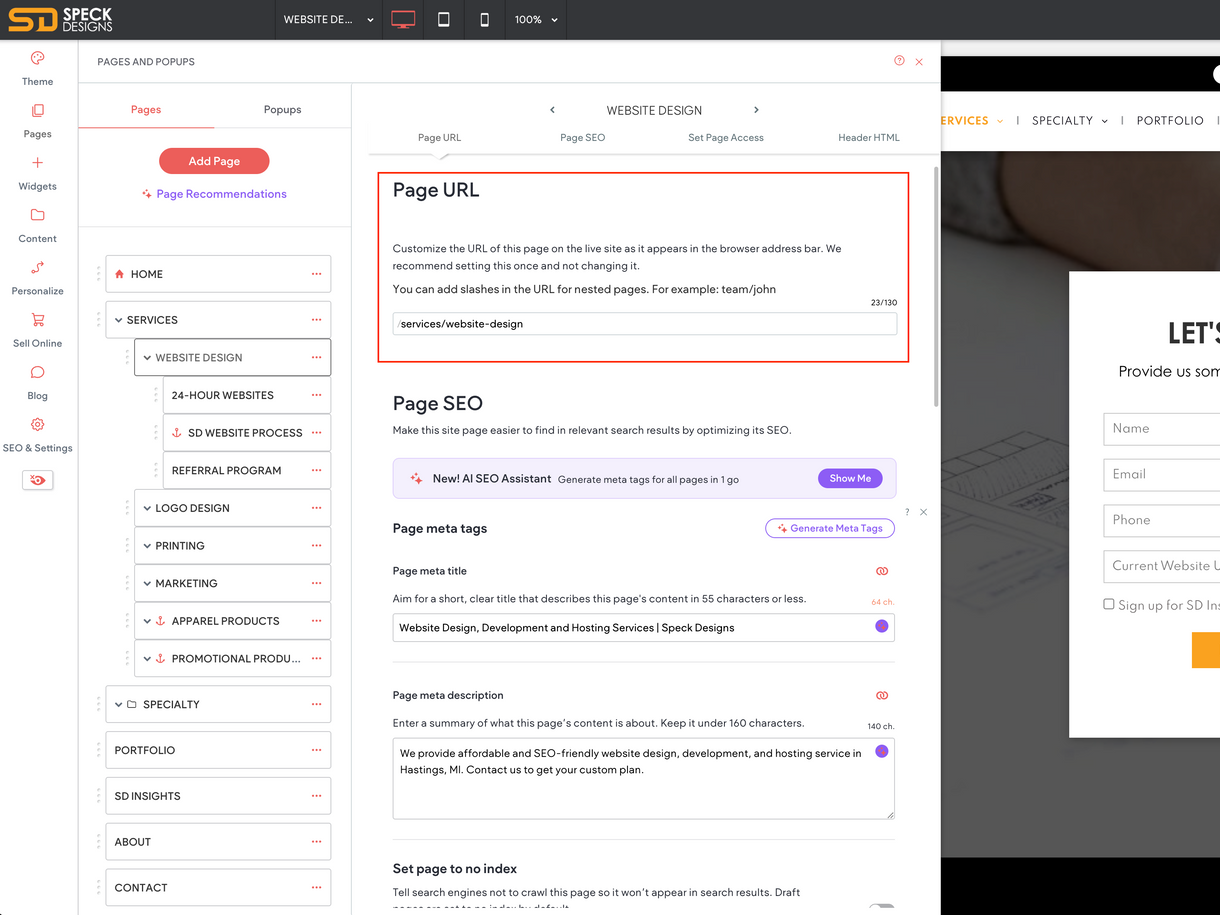
Internal Linking
Internal linking connects different pages within your website, which is essential for guiding users through your content and for improving SEO. Properly implemented, internal links help distribute page authority and increase the chances of pages being indexed by search engines.
- Create Contextual Links
Contextual links are links embedded within relevant content. For example, if your website has a blog post about “DIY Home Painting Tips” and another about “Professional House Painting Services,” link them to guide users from one to the other. This keeps visitors engaged and potentially increases conversions. - Use Descriptive Anchor Text
The anchor text is the clickable text in a hyperlink. It should be descriptive, providing users and search engines with context. For example, instead of generic text like “click here,” use “our full range of roofing services” as anchor text for a link to a roofing services page. - Create a Logical Structure for Internal Links
Organize your links to create a hierarchy that makes sense for users and search engines. Linking to high-priority pages (e.g., product or service pages) from blog posts or less-trafficked pages can help those pages gain authority and ranking potential.
Key Takeaways
On-page optimization is a crucial part of any SMB’s SEO strategy. By focusing on key elements like meta titles and descriptions, header tags, image and video optimization, URL structure, and internal linking, SMBs can create a strong online presence, attract more local traffic, and engage visitors effectively. With these optimizations, small businesses can improve their search rankings, enhance the user experience, and ultimately, drive more conversions.





